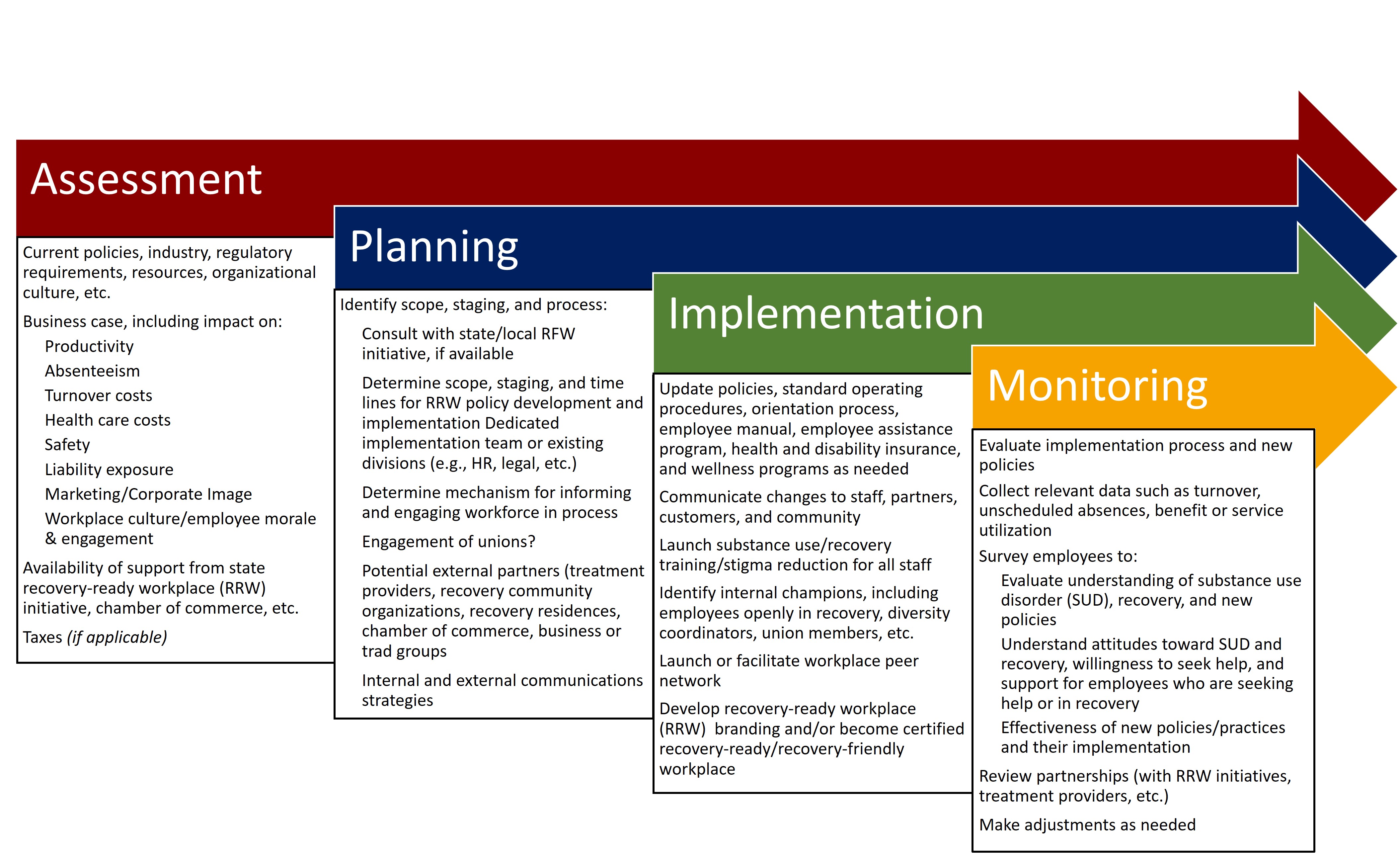
Becoming a recovery-ready workplace may seem daunting. However, employers can adopt recovery-ready workplace policies one or two at a time, evaluating their impact. Gradual implementation can be undertaken in an ad hoc manner or through a staged process that begins with an assessment of the impact of substance use on an organization’s workforce and workplaces; the legal, regulatory, and other requirements that govern their operations and their industry or sector; the identification of key internal champions and external partners who can facilitate the recovery-ready transition; and the mapping out of planned steps over time. A dedicated implementation team may help facilitate a smooth transition to recovery-ready workplace policies. It can be comprised of representatives of different organizational systems and stakeholder groups, such as legal counsel, human resources, management, and supervisory and line staff, including organized labor representation in unionized workplaces. Such a team can help avoid potential pitfalls while helping facilitate buy-in to the new policies across the organization.
The Federal Government makes available a range of resources to help employers in adopting recovery-ready workplace policies. You can find information on those resources on the Additional Resources page. Additionally, a growing number of states and chambers of commerce provide assistance to employers wishing to adopt recovery-ready (sometimes referred to as “recovery-friendly”) workplace policies. Information on selected state and chamber efforts can be found on the Additional Resources page under the State Resources section. Links to resources provided by other entities, such as the National Safety Council, can be found under the Other Materials section on the Additional Resources page.
Every organization is unique. Moreover, factors such as workforce size and composition, regulatory constraints and opportunities, and organizational norms and cultures vary by sector, industry, and organization type. This said, the process of considering and subsequently implementing recovery-ready workplace policies can be viewed as having four stages: 1) Assessment; 2) Planning; 3) Implementation; and, 4) Monitoring. This is represented in the graphic below.
NEW! Sample Recovery-Ready Workplace Assessment, Planning, Implementation, and Monitoring Process 
